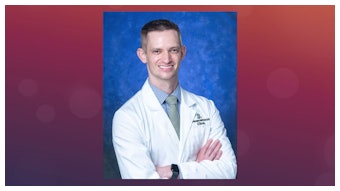And the answer is?
Annual session explores problem-solving techniques for making the right diagnosis.

There’s value in keeping hospitalists on their toes while arming them with the information they need in unique situations. That’s the approach Leonard Feldman, MD, FACP, FAAP, MHM, associate professor of internal medicine and pediatrics at Johns Hopkins School of Medicine in Baltimore, and Daniel Brotman, MD, FACP, MHM, a professor of medicine also at Johns Hopkins, take each year during the session, “The Diagnosis Is Right!”
Their annual tradition of presenting unknown cases to each other and inviting audience participation results in an educational, engaging, and humorous journey to making the correct diagnosis. Although neither can divulge the cases in advance, Dr. Feldman said they often represent important illnesses that may present in uncommon ways
“We always look for cases in general that are not the extreme,” Dr. Feldman said. “However, we try to select something that when attendees go back home to their hospitals it will add to their differential diagnosis. It will not be so rare that they shouldn't be thinking about.”
Likewise, Dr. Brotman said he likes to select cases in which there's something to learn in how hospitalists should “assess the patient at the bedside with your own eyes and your own ears and use that as clues to the underlying diagnosis.”
“We give attendees lots of information as we go along that will take you in one direction or another and allow you to make decisions along the way that will hopefully help you figure out what's going on,” Dr. Brotman said.
Last year, for example, Dr. Feldman shared a case involving a patient admitted to the hospital with recurrent breast cancer. However, that recurrence presented in an unusual way, he said. It had invaded the bone marrow, producing abnormalities with the patient's electrolytes and specifically her phosphate.
“It was basically a paraneoplastic syndrome caused by recurrent metastatic breast cancer. It’s not a presentation we see every day, but metastatic breast cancer is extremely common,” Dr. Feldman said. “But the way that this presented and with the electrolyte abnormalities, it was very different.”
For his case last year, Dr. Brotman presented a case of Addison's disease caused by autoimmunity. The patient had other types of autoimmunity as well. However, the illness was masquerading as gastroparesis, which is often difficult to manage, he said. In this case, hospitalists were able to diagnosis and treat the problem by addressing the patient’s adrenal hormones.
“It's not the most common diagnosis in the world. But it's important enough that that you should at least have it on your radar,” Dr. Brotman said. “That's the approach we typically take with this session — looking at a diagnosis that is important enough and common enough that we'll see it, but that it is presenting in a way that is a bit unusual.”
The session is designed to engage attendees and illustrates the potential of “crowdsourcing” to root out the correct diagnosis through clues, Dr. Feldman said. In the spirit of having fun with learning, prizes will be awarded to those who guess the correct diagnosis during the session.
“This is an exercise in clinical reasoning,” Dr. Feldman said. “Sometimes a diagnosis can present in exotic ways.”
Dr. Brotman underscored the importance of learning by seeing how multiple people approach diagnostic conundrums.
“I think sometimes people feel like they're supposed to be doing it all by themselves rather than get the input of colleagues,” he said. “The fact that we do it with the input of colleagues makes it more accessible. Everybody struggles with hard cases, so in this session, it's fun to work it out together.”
Visit SHM Meeting News Central for more coverage.











